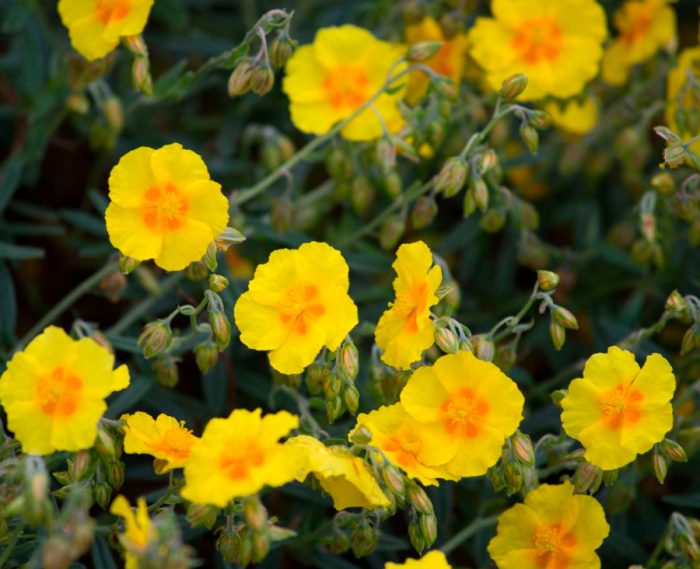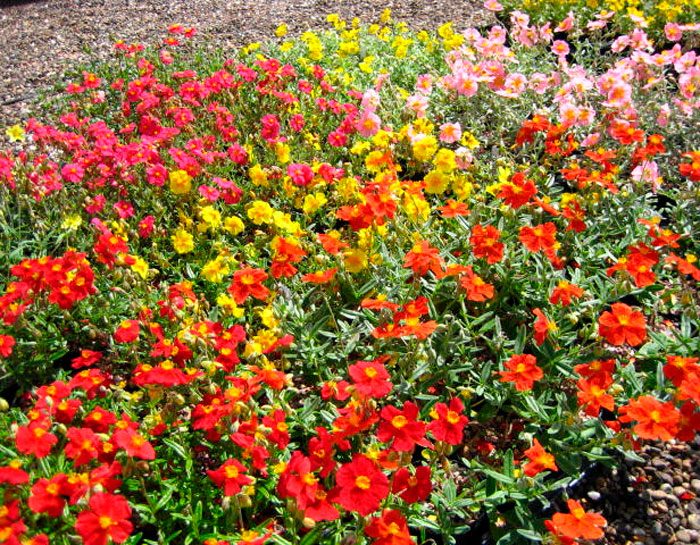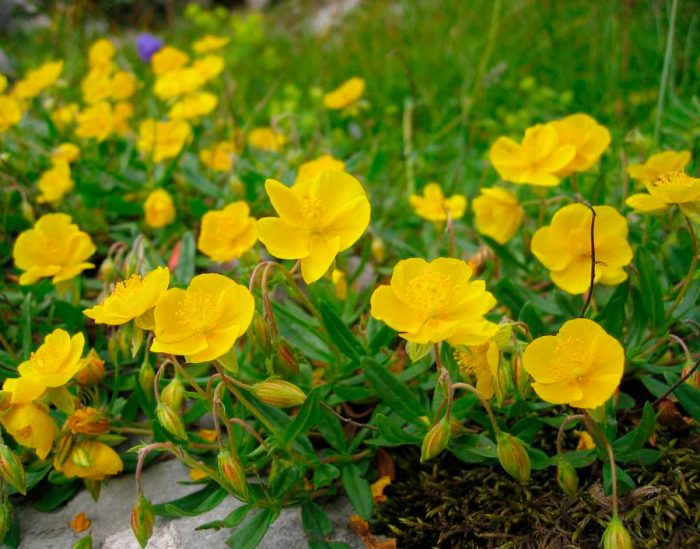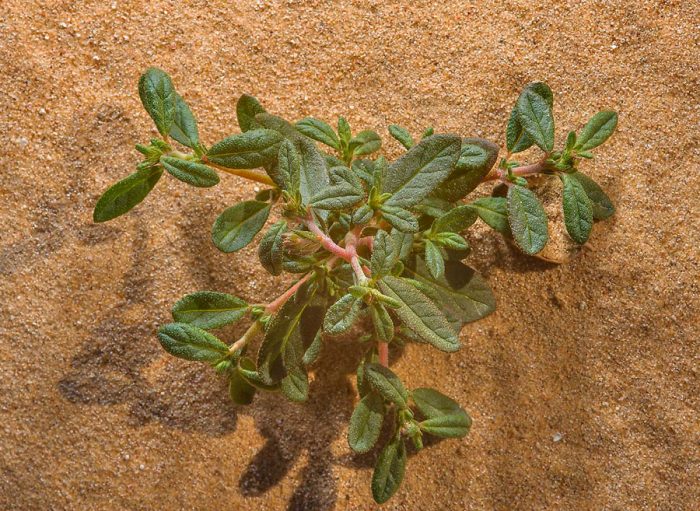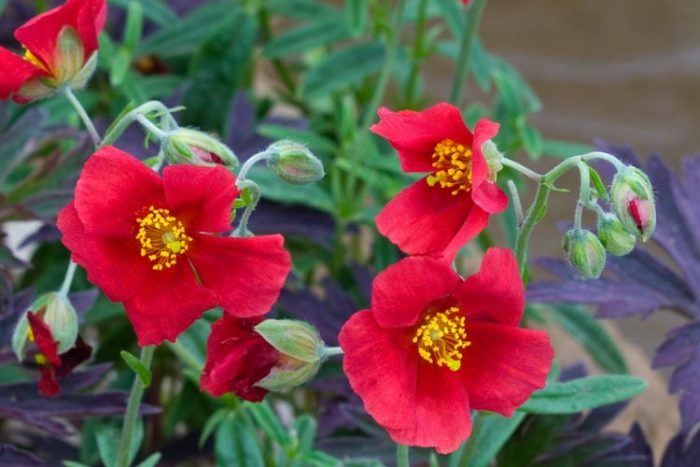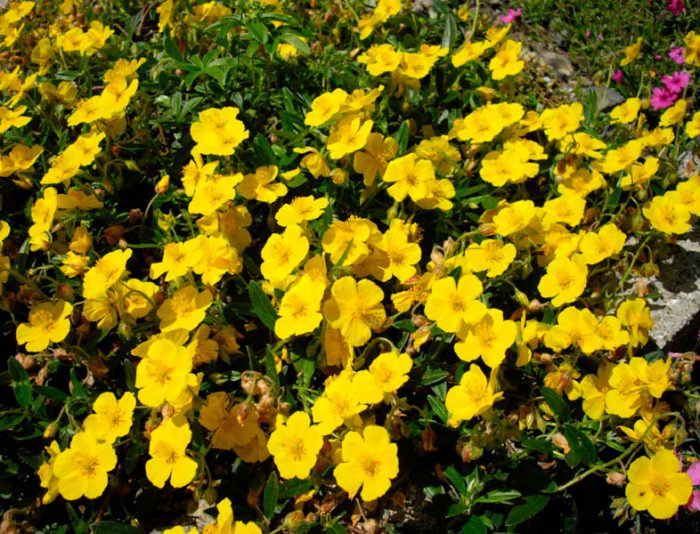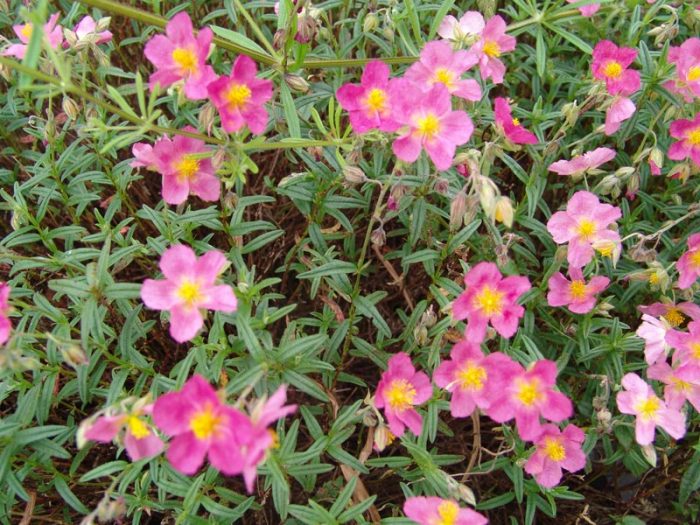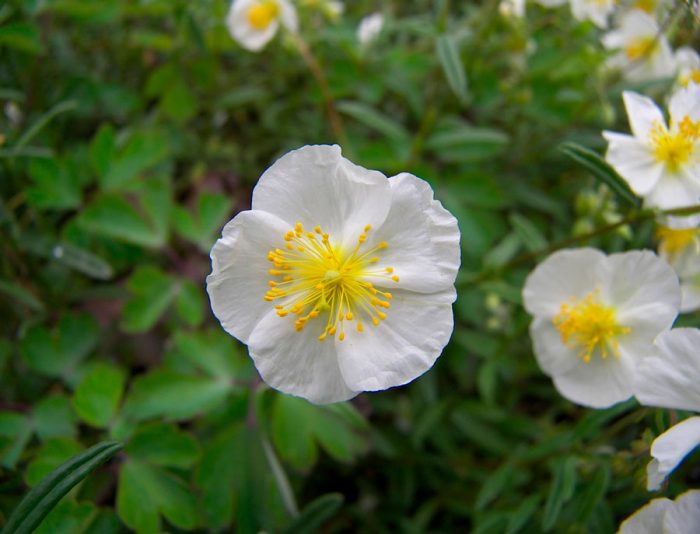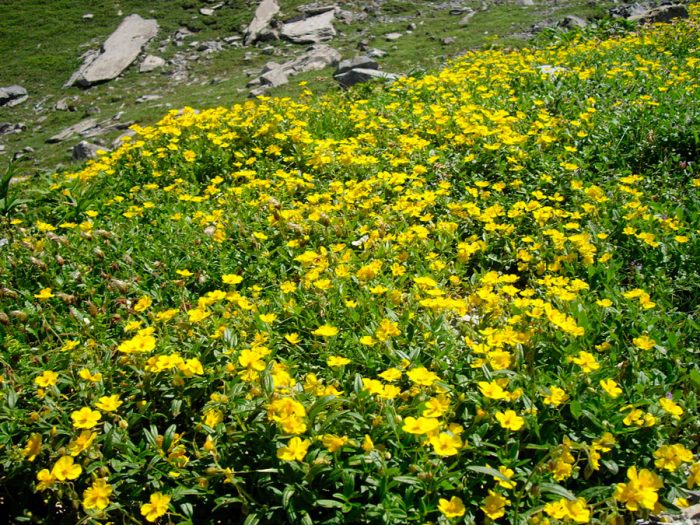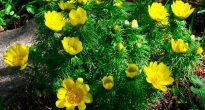The sunflower plant (Helianthemum), also called heliantemum, nezhnik, or stone flower, is a representative of the Cistus family. In nature, such a plant can be found in North Africa, America, Europe and Asia. This genus unites about 80 species, with only a part of them cultivated by gardeners. The Latin and Russian names of this kind are associated with the peculiarity of the sunflower - its spectacular flowers open with sunrise, but at about noon they already crumble.
Content
Features of the sunflower
Sunflower is a herb or shrub represented by annuals and perennials, the stem can be straight or creeping, its length varies from 0.1 to 0.3 meters. Opposite simple leaf plates can have a shape ranging from linear-lanceolate to oval. The racemose inflorescence consists of flowers, usually yellow in color, but they can also be pink, white or orange. The fruit is a one-or three-celled capsule with seeds inside.
Growing sunflower seeds
Sowing seedlings
As a rule, sunflower seeds are sown directly into open soil. However, there are times when it is recommended to grow it through seedlings, which are then transplanted into the garden. Sowing seeds for seedlings is carried out in the first days of March. For this, it is recommended to use peat cups or tablets, the fact is that the root system of such a plant interacts with special beneficial fungi, and during transplantation or picking, this fungal layer can be destroyed, as a result, the planted bushes can get sick and even die. In this regard, experts do not advise that such a plant be subjected to picking, transplanting, and even reproduction by dividing the bush.
2 or 3 seeds are sown in one container, while they are laid out on the surface of a loose and moistened substrate, they are covered with a thin layer of sand or vermiculite on top, and the containers are covered with glass or film and transferred to a place where there is bright but diffused light, and the air temperature is kept within the range from 18 to 24 degrees. The first seedlings can appear in both 7 and 30 days. Immediately after this happens, the shelter is removed from the container, while the plants themselves are transferred to a cooler place (from 15 to 16 degrees). To improve the development and growth of seedlings, she needs to ensure the difference between air temperatures during the day and at night, it should be about 4-5 degrees.After the plants grow up, they must be thinned out, for this, take scissors and cut those seedlings that are the weakest at the level of the substrate surface in each container. As a result, only one of the most powerful and healthy seedlings should remain in each glass. It is very simple to care for the seedlings, they need to be watered in a timely manner and systematically carefully loosened the surface of the substrate near the bushes.
Planting sunflower in open ground
What time to plant
Sunflower seedlings are planted in the second half of May or in the first days of June, but before that it must be hardened. The procedures related to the hardening of seedlings last about 1.5–2 weeks, for this they are transferred to the street every day. The duration of such procedures is increased gradually, starting from several hours. At the very end, when the plants are already hardened, they will be able to stay in the fresh air around the clock. At first, for hardening seedlings, you should choose a place well protected from wind, rain and drafts.
Landing rules
It is quite easy to grow a sunflower on your site. For planting it, you should choose a well-lit open area, while the suitable soil should be alkaline or neutral, and fine gravel and sand must be present in its composition. Such flowers can be grown on loamy soil, but before planting it is dug up by adding dolomite flour.
Since the bushes of this plant in a short period of time are capable of growing very strongly, the distance between the planting pits should be at least 0.3 meters. Moreover, their depth should be such that a peat pot with a plant could be placed in them. Before planting, the seedlings are well watered, and then they are placed in pre-prepared planting holes, all existing voids should be filled with soil, the surface of which around the flower is then tamped. The planted bushes need abundant watering.
Sunflower care in the garden
To grow a sunflower in your garden plot, you need to water it in a timely manner, weed it, cut it off, pick off flowers that have begun to fade, loosen the surface of the soil near the flowers, feed it, and perennials must also be prepared for wintering.
To stimulate flowering, those shoots that have faded should be cut off by about 1/3 of the length. If your garden is decorated with the appearance of such a plant with red flowers, then keep in mind that for the winter such bushes must be covered very well, since it does not have very high frost resistance. It can also be grown as an annual. Species with orange and yellow flowers are more resistant to frost, so they are suitable for cultivation as perennials. Those varieties and species that have silvery leaf plates also need good shelter for the winter. They cover the bushes in late autumn with agrofibre or cover them with hay (dried grass).
How to water and feed
Such a crop is resistant to drought, so it does not need a lot of watering. If it often rains in summer, then you won't have to water such flowers at all. In spring and autumn, this plant does not need to be watered. If there is a prolonged drought in the summer, then the area with the sunflower will need to be watered regularly and very abundantly. Water for irrigation should be well settled and heated in the sun.
Fertilizers are applied to the soil only if necessary, shortly before the bushes bloom. For this, organic fertilizer is used in liquid form. Please note that if there are too many nutrients in the soil, then because of this, the bushes will intensively grow foliage and shoots to the detriment of flowering. If such flowers grow on nutritious soil, then there is no need to feed them at all.
Diseases and pests
The greatest danger to the sunflower is represented by prolonged rains.Since the soaked bushes rot, and rot forms on them. The same can happen during the melting of the snow cover. Rotten bushes must be dug up and burned immediately after they are discovered, and the area on which they grew is spilled with a solution of a fungicidal drug, for example, Fundazol. Sometimes a stone flower gets sick with powdery mildew, in this case it can be saved, for this it is sprayed with a fungicide solution.
Thrips and aphids can settle on the bushes, they feed on the cell sap of this plant, which makes it weak and withers. In the fight against such harmful insects, it is recommended to use biological insecticides, which can be found on the shelf of a specialty store.
Types and varieties of sunflower with photos and names
Gardeners cultivate only a small part of the sunflower species. Below we will talk in more detail about the most popular types.
Heliantemum mutable (Helianthemum mutabile)
It is not necessary to cover such a perennial for the winter. The height of the rising shoots is about 25 centimeters, on them lanceolate leaf plates are located, on the seamy surface of which there is pubescence. Pinkish-white flowers, up to 20 mm in diameter, are collected in curls. Flowering begins in May – June.
Alpine sunflower (Helianthemum alpestre)
Although this species is resistant to frost, it still needs to be covered for the winter. In nature, it is found in the alpine belt from the Pyrenees to the Balkans. The height of the bushes is about 10 centimeters, they form lush low evergreen rugs, reaching about 0.3 m in diameter. The color of the flowers is yellow.
Apennine sunflower (Helianthemum apenninum)
Such a shrub, which is a perennial, does not need to be covered for the winter. His homeland is southwestern Europe and Asia Minor. The height of the bush is from 20 to 25 centimeters, it is decorated with lanceolate leaf plates, on the seamy surface of which there is pubescence. During flowering, brushes are formed, consisting of pinkish flowers, reaching up to 20 mm in diameter.
Monet Sunflower (Helianthemum nummularium)
In nature, such a branched shrub is found in the Mediterranean and Central Europe. Its height is about 0.4 m. There is pubescence on the surface of outstretched or rising shoots. The shape of the leaf plates is lanceolate or oval, their seamy surface is felt-gray, and the front is green. In diameter, the yellow flowers reach about 25 mm, they are collected in spectacular curls.
Arctic sunflower (Helianthemum arcticum)
It is an endangered endemic that grows in Russia, more precisely in the Murmansk region. The height of this perennial dwarf shrub varies from 0.1 to 0.4 m, it grows a lot of shoots. Inflorescences consist of 3–6 rich yellow flowers, reaching about 25 mm in diameter.
Hybrid sunflower (Helianthemum x hybridum)
This species contains all garden forms and varieties obtained by crossing the monetary sunflower with the Apennine. The color of flowers in such plants can be pink, red, white or orange.
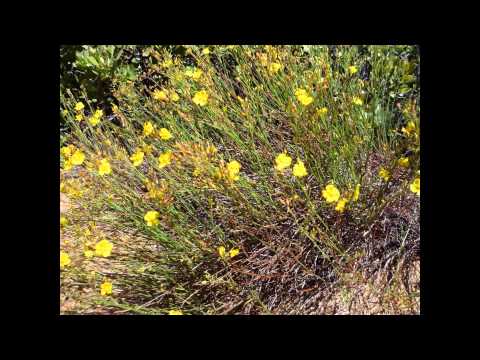

Watch this video on YouTube

